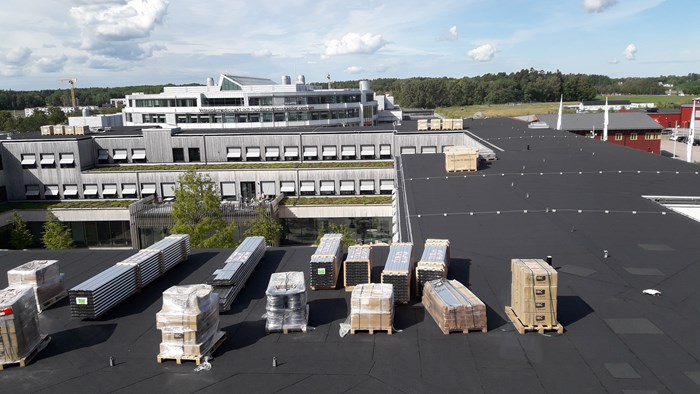During the summer, Akademiska hus has started work on their biggest solar energy installation so far – on Campus Ultuna.
– SLU deserves praise for their commitment, which contributes to an ecologically, socially and economically sustainable development says John Johnsson, Team Leader Energy.
– The investment in solar energy strengthens Campus Ultuna as a place for sustainable development, at the same time it contributes to reaching the ambitious energy objectives adopted by Akademiska hus. This installation means we will increase our solar panel capacity nationally by 50 per cent, from 2 to 3 million kWh. This is proof that we are serious about renewable energy, explains Johan Tjernström, Energy Business Developer at Akademiska hus.
At Campus Ultuna, the annual energy consumption is 11.9 million kWh, so this covers almost a tenth of that. It is a big step towards our vision of being climate neutral by 2025, in time for SLU’s 50th anniversary, says Johanna Sennmark, Head of Environment at SLU. We are happy that Akademiska hus has chosen to invest here.
Technical information
- The new installation means a large part of the roof surfaces at SLU’s Campus Ultuna will be covered by solar panels. Together with the panels already installed on Campus Ultuna, they are expected to produce close to 1 million kWh annually.
- Panels have been installed on the roofs of Mark-Vatten-Miljöcentrum (MVM), the Teaching Building, the SLU Library, the Centre for Veterinary Medicine and Animal Science and Ulls hus.
- Another 3,085 modules are now being installed, with a peak wattage of 849 kW and covering a surface of 4,936 square metres. Add to this the existing installations, and the total surface will amount to 6,434 square metres with a peak wattage of 1,078 kW, which corresponds to close to 1 GWh solar energy annually.
- To give you an idea of the energy production, the amount produced would be enough to lift 1 tonne of rocks up and down the 324 metre high Eiffel Tower 1 million times annually, or drive a 2.2 tonne Tesla S around Earth 130 times.
- The payoff time for the installations is between 10 and 11 years depending on where they are located.
- We have opted for polycrystalline solar cells. They have a somewhat lower efficiency than monocrystalline solar cells, but are cheaper and offered the most kWh per krona invested.

